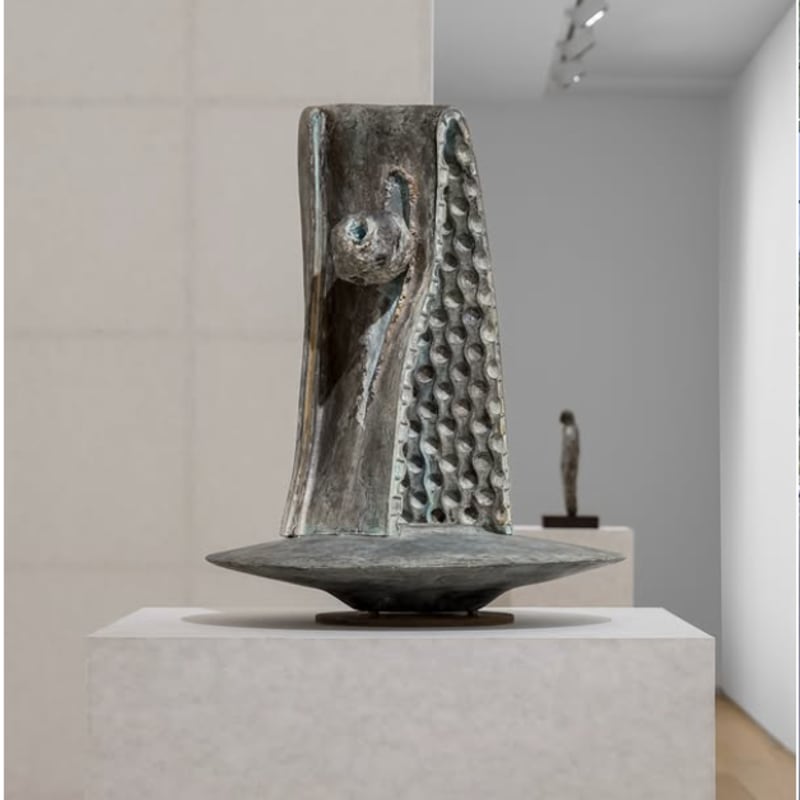

Bernhard Martin Gott Und Ich Wir Wissen's Schon (God And I, We Know)
Overview
Bernhard Martin surprises by a novel radicality: in his works, the most different image worlds conceivable are combined and - following the surrealistic tradition - engaged in interactions.
The gallery Thaddaeus Ropac is pleased to announce the exhibition "Gott und ich, wir wissen´s schon" ("God and I, we know") of the artist Bernhard Martin.
The artist will be present at the vernissage.
In the early 1940s, Francis Picabia was the first artist who, on a large scale, integrated trivial illustrations from magazines in his picture compositions. He became the father figure of a whole generation of artists socialized in the 1980s who responded to the mass-medial flood of images by an intensive sampling and a delight in unconventional combinatorics.
In this context, Bernhard Martin surprises by a novel radicality: in his works, the most different image worlds conceivable are combined and - following the surrealistic tradition - engaged in interactions. "We find ourselves in a supermarket here, and I am packing the trolley full of stuff," Bernhard Martin says. Characteristic of Martin's respective work is the razor-sharp separation of the objects in the picture, which are set off against each other by strict contours. The user surfaces of contemporary graphics programmes are reflected in his pictures. And the hybridity of the represented people, landscapes, and objects is further underlined by a stylistic inhomogeneity: photo-realistic segments meet with gesturally abstract parts and two-dimensional airbrush fields.
Bernhard Martin is a chronicler of everyday life. In his chronicling, a well-reflected, never spontaneous recourse to sometimes highly infantile objects is typical. Martin himself calls his programme "The thought of arbitrariness without being arbitrary." "I paint just as others talk," he sums up matters. In his encyclopaedic collections of objects, which often look like "ready-to-use objects of user-hostile quality" (Vanessa J. Müller), however, he never negates the classic types of art history: landscape, still life, genre, and portrait always remain identifiable. "I am interested in worlds, islands, miracle chambers, biotopes, contrasts clashing with each other, hence in everyday life," Martin describes the intention of his work, which forms a fascinating subsystem of the real appearances. "Many pictures are like eddies that suck your eye in," Daniel Völzke recently commented in the 'Zeit Magazin'.
Bernhard Martin was born in 1966 in Hannover, Germany, studied at the art college in Kassel, Germany, from 1983 to 1989, and has lived in Berlin for some years now. To a wider public, he became known in particular by the much-noticed group exhibition of new German painting at the 'Frankfurter Kunstverein' (2003), and meanwhile he features in important collections, like, e.g., the Museum of Contemporary Art in Geneva, the Rubell Collection in Florida, the Museum of Modern Art in New York, the Collection Sander in Berlin, the collection of the 'Deutsche Bank' in Frankfurt, the Arario Collection in Beijing, etc. In 2005, extensive solo exhibitions in the Villa Arson in Nizza and in the Arario Museum in Seoul followed. On the occasion of Bernhard Martin being awarded the art award of the town Wolfsburg, Germany, the Municipal Gallery Wolfsburg will organize a comprehensive solo exhibition in autumn 2008. There will be a detailed catalogue with a text by Zdenek Felix.
Even in Martin's new work block, the general tone of which is more intensely painterly and which shows an intensified interest in geometrical structures, classical pathos formulas become visible that remind the viewer of works of art belonging to the general cultural canon: if you think, for instance, of the Dutch genre paintings of the 17th century, or of the expressive psychological studies of Francisco de Goya. With all references, however, for Bernhard Martin the unconditional extension of painting ranks first.

















































































































































































